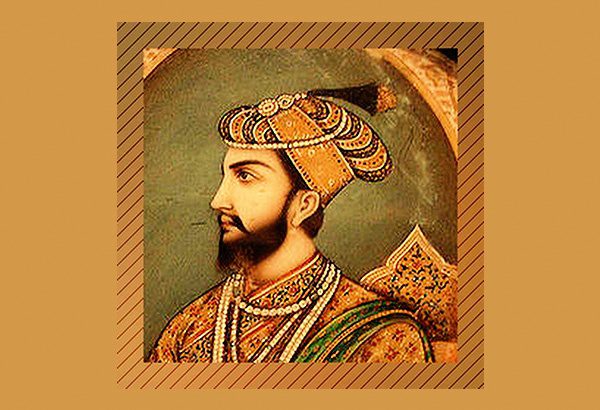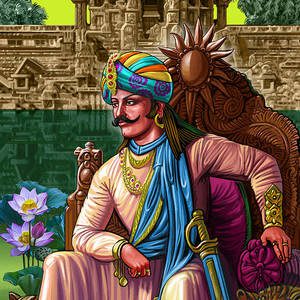Turkish invasion of India began with the rise of Muhammad Ghazni in 1000 AD. In 1025 AD he plundered the Somnath Temple and looted its wealth. After him, several other Turkish invaders invaded India and with the formation of the Delhi Sultanate in 1206 whole of north India was under their rule.
The rulers and sultans of Delhi Sultanate had been heavily glorified in our country but what had not been glorified is the resistance provided by the brave Rajputs (Sons of Kings) of Rajputana.
In almost every invasion that took place form North-Western front of India the Rajputs were the first warriors who bravely repulsed countless invasions. In this article we will discuss about one such heroic resistance provided by a Rajput warrior,who by his actions is one of the greatest men in Indian History but somehow has been forgotten by present day Indians,courtesy of out Invader glorifying History Curriculum.
This is the story of Rana Hammir Singh Sisodia who defeated the sultan of Delhi Sultanate (Tuglaq) in a humiliating manner and regained the Promise Land of the Rajputs i.e. Chittorgarh.
Content
Background: Khilji’s Victory over Mewar and the Tughlaqs rise In Delhi
The first Delhi Sultanate which was founded by Qutub ud din Aibak in 1206 AD were able to establish their rule over north India. After him Khilji dynasty (founded by Jalal Uddin Khilji) took control over Delhi.The most important ruler of Khilji Dynasty was Ali Gurushap or Alauddin Khilji who resisted several Mongal invasions and followed expansionist policy.
In 1303 he attacked Chittor (strong hold of the Rajputs) and laid siege around it. Rawal Ratan Singh, one of the strongest Rajput ruler was the King of Chittorgarh at that time.
On 26 August 1303, Alauddin Khilji ruthlessly sacked Chittorgarh. Rani Padmavati and other women committed JAUHAR in order to save themselves from being at the mercy of the barbaric islamic invaders.
During the battle, Ajay Singh (son of Lakshman Singh who was a relative of Rawal Ratan Singh) took the infant Rana Hammir Singh who was only 1 or 2 years old at that time to Kelwara in to save the future king.
Rana Hammir Singh Sisodia, who was the descendant of Bappa Rawal was raised by Ajay Singh who trained him in Rajput’s style of warfare.
At the same time, Ajay Singh continued his struggle against the Delhi Sultanate through Guerilla warfare.
After the death of Ajay Singh in 1320 AD, Hammir Singh became the ruler of Mewar. After killing Munja Balecha (a raider who was famous for plundering villages and looting innocent people’s wealth), the king of Kantaliya people started respecting Hammir Singh.
At this time Maldeo (the supporter Alauddin Khilji), was the ruler of Mewar to Maldeo under the newly formed Delhi Sultanate of the Tughlaqs.

The First Rana: Rise of Rana Hammir Singh
With the rise of Hammir Singh Maldeo was worried about his throne and he decided to send a marriage proposal of his widow daughter Songari to Hammir Singh.
Although during that time widow remarriage was considered as the symbol of a weak ruler. But chivalrous Hammir didn’t hesitate on this and agreed on this.

After the marriage, Hammir decided to capture his ancestral land of Chittorgarh. Soon after his marriage, Hammir Singh overthrew his father in law and ascended the throne of Mewar in 1326 AD, and adopted the title Rana (first one to adopt the title, Rana)
War Against Tughlaqs
On the other hand, the newly formed Tughlaq Dynasty which was established by Ghiyasuddin Tughlaq after killing the last Khilji ruler Khusro Khan in 1320 AD, rose to power and became one of the most powerful Sultanates of Delhi.
Muhammed Bin Tughlaq, also known as ‘wise fool’ ascended the throne of Delhi in 1325 AD. He introduced heavy taxes on non -Muslims especially Hindus. Many farmers left farming under his rule. Execution of those who couldn’t pay taxes was common under his rule and just like Alauddin Khilji he had a dream of world conquest and was a follower of expansionist policy.
It is believed that Raja Maldeo son invited Muhammad bin Tughlaq to invade Rajasthan.
Final Battle on the fields of Singoli
Muhammad Bin Tughlaq, being the Sultan of a huge kingdom had almost 4 times the army of Rana Hammir Singh. Blinded by his bigoted Religious zeal and hunger for plundering Mewar, he was overconfident of his victory.
On the other hand, Rana Hammir although having a smaller army, was a great tactician & strategist who, having grown in the same hills of Aravali knew the battlefield & having spend years using guerrilla tactics against the enemies, was all too familiar with how to get a big army to submit.
The army of Muhammad bin Tughlaq and Rana Hammir Singh collided at Singoli in Neemuch. Hammir Singh was able to surround the invading army and ordered his allies (Charans) to conduct Guerrilla tactics on the enemy.
The Sultan’s army was harassed all the way by attacks from small groups of Rajputs. This not only wreaked the army but also reduced their morale and got them fearful. Rana Hammir, also applied scorched earth policy, destroying anything in the way of the enemy army that could be of their use. Villages were emptied out. Wells was Poisoned and so on.
The terrain was also unfamiliar for the Sultan’s Delhi army which resulted in a total disaster for the Turks Sultanates.
The Sultan Muhammad Bin Tuglaq thought that the defending Rajputs would use the high walls and not attack them directly. But at the last moment, Hammir Singh decided to launch the frontal charge through Cavalry, which is the principal move of the Rajputs.
What followed was total destruction of Muhammad’s army at the hands of the Rajputs. The already weakened & starving army was defeated decisively.
But the humiliation for the Sultan was not yet over. It was just beginning.
Muhammed bin Tughlaq soon after this was taken as a prisoner for three months. Later the Tughlaq’s offered a proposal which was accepted by Rana Hammir Singh. It gave the Rana a humongous amount of 5 lakh rupees(some sources mention it higher) and the Sultan was forced to give in writing that Mewar would be independent of The Delhi Sultanate. The proposal was as follows:
‘500000 Tankas and the region of Ranthambore, Nagor, and Shivapuri was given back to Mewar in exchange of the Sultan.’
Legacy:
Under Rana Hammir Singh, the Foundation for Hindu Resurgence was laid and this great bloodline of Rajputs kept fighting the Islamic invaders as their ancestors had for the next centuries. The Great Maharana Pratap, Rana Sanga are the descendants of the same.

Sources:-
Sailendra Sen, a Textbook of Medieval Indian History
An Advanced History of India, by Romesh Chandra Majumdar
Annals and Antiquities of Rajasthan, by James Todd [though this is not the complete source]
Donate to our Cause
If you support what we are doing and would like to contribute to help us grow and reach more Indians to teach them more about such forgotten historic Indian Heroes and stories, please consider donating any amount. It will help us grow


One comment